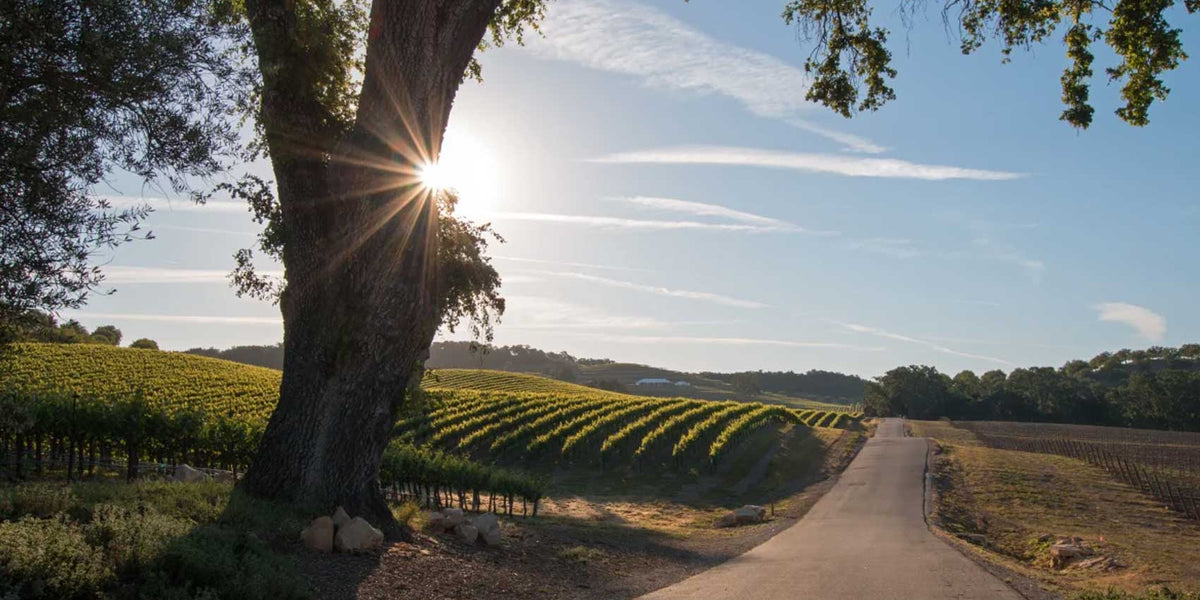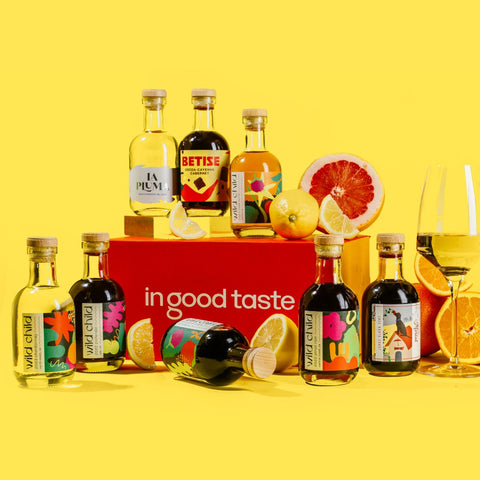California on the Map
The fame of California wines didn’t ripen on a vineyard in Napa or Sonoma, as one might expect; instead, it arose a world apart at the Académie du Vin in Paris. During a prestigious 1976 wine competition, nine French judges blind-tested a cavalcade of first-rate Chardonnays followed by that of assorted reds. What resulted was shocking: Californian wines, which had previously been outcasts on the international stage, took first place across the board.

The judges were aghast. Among them, a certain Odette Kahn, editor of La Revue du vin de France, alleged fraud and demanded a recasting of the votes. But it was too late. The so-called Judgement of Paris had popped the proverbial cork on California wines forever. And from that point on, these wines would be regarded as equals to their Old World counterparts.
Shortly after this scandal, the U.S. began exporting its wines to a number of countries for the first time. Perhaps to the chagrin of Ms. Kahn, France was among them. Today, California wine exports are a billion-dollar industry, reaching consumers in over 142 nations. Such sustained demand is driven by their rich diversity, which has everything to do with where they’re cultivated.

California’s Wine Regions & What They’re Known For
The Golden State’s topography and microclimate zones foster the growth of over 100 different types of grapes. To make sense of them all, California’s wine regions have been divided into distinct American Viticultural Areas, or AVAs, based on climatic and soil conditions. For a tasting tour of California, the In Good Taste California Wine Mixer features beautiful examples of the terroir of each region. Each winery falls within an AVA, and each AVA falls within a larger California Wine Region, of which there are six:

North Coast AVA
Most famous among them is the North Coast, home of Napa and Sonoma counties. Napa Valley wineries are more touristic, but nearby Sonoma supports the most diverse grape growing subregion in the entire state – there are 18 AVAs within the county alone! This diversity is made possible by the perfect climate combo of fresh ocean air from the west and warm, sunny interior valleys to the east.
As a result, Sonoma produces high-quality Pinot Noir, Chardonnay, Merlot, Cabernet Sauvignon (like this one from the Alexander Valley AVA), Zinfandel, Syrah, and Sauvignon Blanc, to name a few of its varieties. Conversely, Napa, while also capable of producing several types of grapes, is really celebrated for one of them: Cab. Its Old World inspiration, Bordeaux, led winemakers to mimic this region by planting mainly Cabernet Sauvignon and Merlot vines early on. Today’s Napa Cabs are dense (meaning they have nuanced flavors), with fruit, floral and oak notes, and a medium-to-high tannin profile. At least in California, but perhaps elsewhere too, they’re unparalleled in quality.
Simply put, Napa and Sonoma wineries are world-famous for good reason.
These illustrious sub-regions represent one pole of the North Coast, Mendocino County, but the other limit of that AVA, marks the other. Abiding in North California, it records the coolest temperatures in the state and therefore excels with varieties like Riesling, Gewürztraminer, and Sauvignon Blanc. Within Mendocino County is the Anderson Valley, a foggy, fertile swath of land that flanks the snaking Navarro River. It’s known for some of the best sweet wines and may also entice sparkling lovers.
Central Coast AVA
At its southernmost limit is Santa Barbara, home to seven smaller AVAs defined by canyons, hills, and valleys. Distinct microclimates exist in this area because of the way in which ocean air flows through its topographic features. This factor, in combination with thin soils, makes Santa Barbara County AVAs ideal for producing exceptional Pinot Noirs.
Due North of Santa Barb, about halfway to San Francisco, is the AVA of Paso Robles in San Luis Obispo County. It’s a bit more inland and therefore experiences the greatest diurnal temperature variations of California's Central Coast. In other words, there’s a huge delta between the average daily highs and nightly lows. To add to its peculiarity, Paso Robles’ soils are sandy because they’re derived from a mixture of bedrock and limestone.
Zinfandels were planted here when the region was first cultivated, and they continue to be the main event at Paso Robles wineries. These are powerful reds that really pack a punch with every gulp. That being said, Paso Robles’ other varieties, like this bold and silky cab, should not be underestimated. The unusual conditions of this region ensure that all its varieties have a unique character.

San Francisco Bay AVA
It might be surprising to learn that the Greater San Francisco Bay Area, including parts of Silicon Valley and Oakland, is itself an AVA. Overlapping with the northern tip of the Central Coast region, the Bay Area is home to 142 wineries — apparently tech nerds enjoy imbibing just as much as we do. And while nearby Sonoma and Napa wineries usually eclipse this smaller AVA, the Bay Area boasts some excellent options too.
Sierra Foothills AVA
Sierra Foothills is the easternmost wine region in the state, and, as the name suggests, it’s set in the foothills of the Sierra Nevada Mountains. Defined by steep, sloping vineyards, this AVA deals with much higher elevations than other parts of California wine country. To cope with the terrain, vintners terrace their vines. And, accordingly, Syrah and Zinfandel do exceptionally well. In terms of white wines, Chardonnay dominates the scene.
Sierra Foothills is also one of the few California regions to support Sangiovese grapes, a variety of an ancient species first planted by Etruscans in the vineyards of Tuscany. Less than 1% of the entire state’s grapes are Sangiovese, but this Stealing Thunder California Rosé has secured the best of them.
South Coast AVA
Sunshine, heat, and a smooth Pacific breeze: these are the defining elements of the South Coast, an AVA that stretches from Orange County to the frontier of Mexico. This California wine region is lesser known than the North Coast, but, believe it or not, it produces some of the best red wines. Cabernet Franc, Montepulciano, and Merlot come to mind. For whites, Chardonnay thrives under the climatic combination of an ever present SoCal sun tempered by cool ocean winds.
Significant fluctuations in elevation throughout the South Coast AVA impact its soils. They can range from sandy to rocky, affecting the types of grapes that can be grown.
Central Valley
The Golden State’s largest wine region isn’t even officially recognized as a wine region — an AVA, that is. Central Valley California is a lush agricultural tract that spans the interior of the state. Almonds, avocados, figs: it’s so fertile that pretty much anything and everything grows in its soils, including grapes. So it’s no surprise that the Central Valley supplies a huge number of them to other parts of California wine country.
But this region is also host to many stellar vineyards in its own right. Lodi wineries, for example, are mostly family-owned and famously laid back. Over 85 of them welcome visitors for tastings daily. The region consistently wins awards for its high-power Zinfandels, and is a top producer of Cab, Merlot, and Sauvignon Blanc.

California Wine Country Terroir and Climate
Terroir, which translates to “land” in French, is an Old World concept that ties wines intrinsically to the earth on which they were cultivated. More simply put, it’s “the way in which a wine reveals the place it came from,” as defined in one fiery 2008 LA Times op-ed, which, later on, labeled the concept as pretentious French “gobbledygook.” It’s safe to say that most wine connoisseurs would disagree with the author’s sentiment. Terroir is subtle, but understanding it can really enhance the wine drinking experience.
Its main considerations are found at the confluence of soil type and climate. Terroir can apply to an entire region but, depending on microclimate conditions, can also be as specific as a subsection of one vineyard.
In California, there are 14 types of wine soils that can impact terroir: they range from igneous-, metamorphic- and sedimentary-based to sand-, clay- and silt-based. In Mendocino County, for example, many vineyards have vastly differing soil profiles. Some even have multiple soil profiles within the same vineyard. Take bearwallow, a Mendocino County soil designation that’s present across roughly 1,200 acres of wine grape-bearing land. It has a soil profile primarily composed of sandstone fading to clay as depth increases. Boontling is also widely present in the region and has vine-supporting soil that’s defined by mixed alluvium.

An equally significant consideration of terroir is climate, which can be impacted by the most subtle distinctions in topography. In Mendocino County, fog and cool air are typical elements that create microclimates. In Paso Robles, extreme temperatures are definitive. Lack of rainfall is also an important dimension. As precipitation is so infrequent here, vintners have total control over the amount of water their vines receive: excess water can decrease a grape's sweetness; and the opposite relationship also holds true. In Santa Barbara, vastly differing topographic features impact the flow of ocean wind into the wine region. This is the determinate that outlines its terroir designations.

California Wines: Production, Consumption, and Exports
According to the Wine Institute, vineyards in California produce over 80% of US wines. So the story of American wine exports is really centered on the Golden State. In 2019, 98.1 million gallons were shipped abroad, netting a revenue of over $1.36 billion for US wineries.
Domestically, the California wine industry’s impact goes far beyond the state itself. The Wine Institute indicates that its vast trade network sustains even more jobs outside of California (461,000) than within it (325,000). In terms of production, the reported wine grape-bearing acreage in the state has measured consistently above 460,000 over the past decade.

Winery Sustainability
Ensuring that vineyards are healthy and productive for many generations to come is the cornerstone of sustainability practices. Lucky for California wine country, the Golden State is a leader in the field.
Vintners can become Certified California Sustainable Wineries through the California Sustainable Winegrowing Alliance. This measures a winery’s sustainability practices across several dimensions, including the health of its soils, its relationship with local habitats, its water consumption, and more.
All of California’s vineyards are held to extremely high standards. But for those keen on trying an eco-friendly practice that raises the bar even higher: “dry-farming” practice – meaning no additional water beyond natural rainfall is used – and facilities that were constructed in such a fashion that energy needs for wine storage rooms are minimal. The California Agricultural Water Stewardship has found that in addition to grapes, tomatoes, pumpkins, watermelons, cantaloupes, winter squash, olives, garbanzos, apples, apricots and potatoes can be successfully dry-farmed. This method requires soil with enough structure to hold moisture in for months at a time, and can encourage roots to dig deeper, yielding a stronger and more resistant vine.
The biodynamic practice, in contrast to simply "organic," means that all chemicals are omitted from the wine-making process. Biodynamic is a holistic approach that uses only natural materials and composts – a big win for the environment and the consumer.
Crash Course: California Wines In a Nutshell
Since the Judgement of Paris, California has been ranked alongside the world’s most prestigious wine countries. And for good reason. An enthusiast could spend a lifetime exploring all the diversity that this state has to offer. But those really wanting to know the bones of California wines, so to speak, should understand the following:
-
While hundreds of grape varieties are grown in California, there are essentially three staple whites and five staple reds. The whites are Chardonnay, Sauvignon Blanc, and Pinot Gris. The reds are Cabernet Sauvignon, Merlot, Pinot Noir, Syrah, and Zinfandel.
-
While the state has an extremely diverse range of soils and topographies, California’s temperate Mediterranean climate, moderated by the Pacific Ocean, is the spine of its wine industry. It makes the whole thing possible.
-
And while each wine region is different, California wines are, in general, “fruit forward,” as Sonoma vintner Clayton Fritz puts it, compared with their Old World counterparts. In general, California grapes are less hydrated and they aren’t harvested until maturity: the riper the grape, the fruitier the taste.
So that’s the need-to-know of Golden State wines. After discovering your California vin préféré, make sure to learn how to choose the best wine glass or what temperature each type of wine should be.










